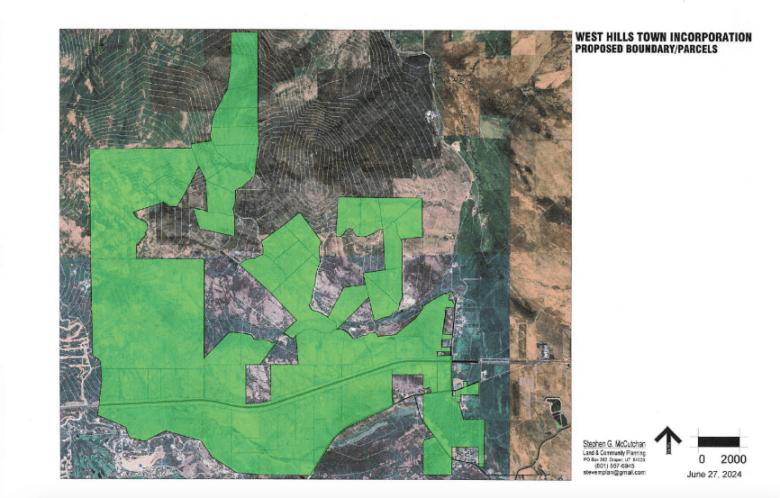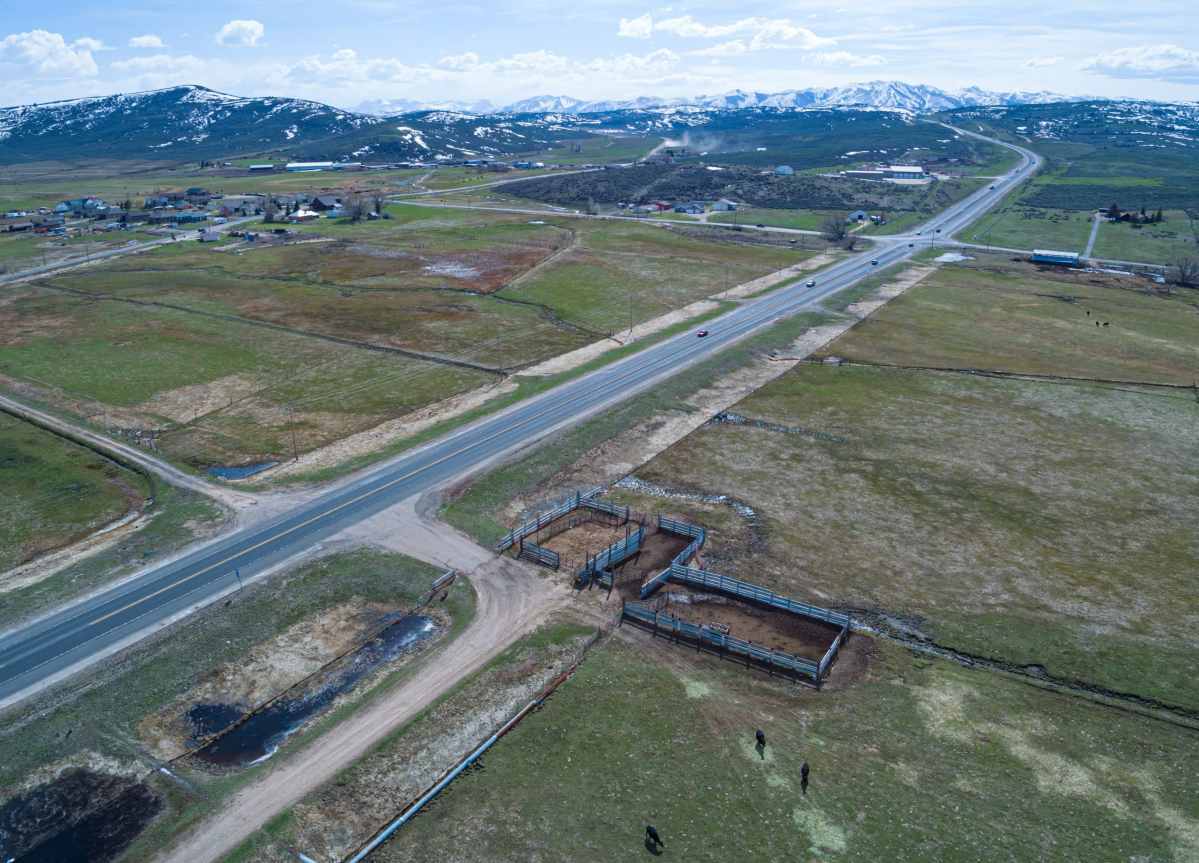A modified proposal for a new town near Kamas and Hideout was submitted to the state earlier this month, resuming the incorporation process.
West Hills sponsor Derek Anderson had to redraw the town lines after 50 landowners asked to be excluded from the original boundary.
The overall residential and commercial density was reduced by 80% in the new proposal and the borders were extended to add about 560 acres to the town to accommodate new additions with larger parcels. The latest West Hills plan is about 15% bigger, increasing from 3,400 acres to just under 4,000 acres.
“Our original pitch to the landowners was, let’s do this together to control the future growth of the area,” Anderson said in a statement. “However, we learned through small and public meetings that some agreed, but many did not. The main concerns seemed to be the projected commercial and residential density, and the inclusion of landowners not interested.”
It’s estimated about 100 people would live within West Hills. Anderson said the town would have fewer property owners and more individuals who own larger parcels.

Anderson changed the plan to remove any landowners who disapproved of the proposal and kept in anyone who didn’t object or who wanted to be included. He said the “positive change” in density was done to accommodate both sides after constructive conversations with local stakeholders.
Opponents of the proposal have long faulted the growth, development timeline and intention of the West Hills effort. Critics have regarded the new map as convoluted because it creates peninsulas and potential islands.
The town sponsor and other supporters see West Hills as a way for residents to have a say in what the community looks like in the future. A feasibility study commissioned by the Utah Lt. Governor’s Office in the spring of 2023 determined West Hills could thrive along S.R. 248 under the right circumstances.
Now, the consultants will use the latest proposal to determine if that’s still the case.
The original plan relied heavily on residential and retail development to ensure the tax base was big enough to support the new town. The population was estimated to grow by 642% in five years with 160,000 square feet of commercial space within the first two years.
Expenditures in West Hills were projected to cost $255,878 in 2025 and could reach $811,887 by 2028 based on the original proposal. A primary resident in the study area was estimated to pay around $233 in property taxes for a home valued at $1.3 million.
Anderson said the five-year projections will be cut by two-thirds so the numbers are expected to come down.
However, the study determined West Hills faced additional challenges if the town was unable to generate enough in sales tax revenue or if Summit County annexed the 834-acre Ure Ranch as planned. Anderson said most of the farm property has been excluded from the request so the county can pursue its open space goals “more comfortably.”
A new study could be conducted by the end of the month. A public hearing would then be scheduled to give residents a chance to weigh in.
West Hills needs support from at least 10% of property owners who own 7% of the assessed land value for the town’s incorporation to be up for a vote during the general election.
Anderson said the effort has enough support to make it onto the ballot, but it won’t have enough time to make it through the process for the 2024 election.
The certificate of incorporation must be submitted 65 days before the election — Sept. 1 — pushing the issue to 2025.
Visit ltgovernor.utah.gov/incorporations for more information.
This article has been updated with the accurate acreage proposed in the modified map.

